In recent years, we have witnessed a significant surge in the use of artificial intelligence (AI) technologies across various sectors, enabling organizations to innovate and streamline their operations effectively. This changing landscape is heavily influenced by cognitive automation and predictive analytics, which are reshaping business strategies and operational frameworks. This article dives into these key trends, highlighting their importance, applications, and the transformative effects they bring to multiple industries.
.
### Understanding AI-Driven Innovation
AI-driven innovation refers to the process of leveraging advanced AI technologies to enhance productivity, improve efficiency, and drive business growth. By integrating machine learning, natural language processing, and data analytics into operations, organizations can make smarter decisions, reduce costs, and create more personalized customer experiences. Numerous organizations across industries are adopting AI tools to gain competitive advantages and meet their evolving market needs.
.
### The Rise of Cognitive Automation
Cognitive automation is essentially a subset of AI that involves mimicking human thought processes to automate complex tasks. Unlike traditional automation, cognitive automation uses algorithms to learn from data, enabling systems to improve over time. This technology can analyze huge volumes of unstructured data, identify patterns, and autonomously execute tasks that traditionally required human intervention.
Cognitive automation is particularly valuable in sectors such as finance, healthcare, and customer service. For instance, in finance, AI-driven chatbots can handle customer inquiries 24/7, reducing operational costs and improving customer satisfaction. In healthcare, cognitive automation can assist in diagnosing diseases by analyzing medical history and symptoms, helping medical professionals make more informed decisions.
.
### Harnessing AI in Predictive Analytics
Predictive analytics involves using statistical algorithms and machine learning techniques to identify the likelihood of future outcomes based on historical data. Its integration with AI allows organizations to gain deeper insights from big data, enhance forecasting accuracy, and drive proactive strategies.
In retail, AI in predictive analytics can be used to forecast customer demand, optimize inventory levels, and personalize marketing strategies. For instance, a leading online retailer can analyze past purchasing behaviors and trends to recommend products that customers are most likely to buy, thus driving sales and customer satisfaction.
Moreover, industries like manufacturing have begun using AI-driven predictive maintenance to predict equipment failures before they happen. By analyzing machine performance data in real-time, manufacturers can schedule maintenance when necessary, minimizing downtime and saving costs.
.
### Current Trends in AI-Driven Innovation
Several trends are emerging as organizations continue to explore AI-driven innovation. Among these trends are:
1. **Increased Adoption of AI Tools**: Organizations are increasingly investing in AI technologies, with analysis revealing that businesses more actively adopting AI experienced higher competitive agility than those that did not.
2. **Emphasis on Ethical AI**: As businesses harness the power of AI, they are also recognizing the importance of ethical practices. Organizations are increasingly considering how AI can be used responsibly and transparently without bias.
3. **AI and the Remote Workforce**: The COVID-19 pandemic accelerated the digital transformation, leading to a growing reliance on AI tools to support remote work. Cognitive automation and predictive analytics have been essential in maintaining productivity and operational efficiency amidst changing circumstances.
4. **Data Privacy and Security**: With an increase in AI implementations, organizations are also making strides in ensuring data privacy and security, necessitating robust frameworks for data governance.
.
### Industry Applications of AI-Driven Innovation
Several industries have started utilizing AI-driven innovation for various applications:
– **Healthcare**: Hospitals leverage AI to monitor patient health in real-time. AI systems can analyze patient data, flag potential health issues, and streamline operational processes, ultimately enhancing patient care.
– **Finance**: Banks and financial institutions employ AI to detect fraud, automate transactions, and assess credit risks. AI algorithms can analyze transaction data in real-time, identifying suspicious activities with remarkable accuracy.
– **Manufacturing**: In manufacturing, cognitive automation tools are employed to optimize production processes. AI-driven predictive analytics can foresee maintenance needs, reduce operational disruptions, and streamline supply chain logistics.
– **Retail**: Retailers utilize AI for inventory management, dynamic pricing strategies, and enhanced customer experiences. AI systems analyze customer behavior and preferences to ensure that stock levels are appropriate and that marketing messages are highly targeted.
– **Transport and Logistics**: AI has made significant inroads in the logistics sector, optimizing routing, managing delivery schedules, and enhancing fleet management through predictive analytics.
.
### Case Studies in AI-Driven Innovation
Several noteworthy examples showcase how AI-driven innovation has positively impacted businesses:
– **Amazon**: The retail giant uses AI algorithms for personalized recommendations that significantly boost their sales. Their predictive analytics systems analyze customer shopping habits to suggest products that customers are most likely to purchase, leading to increased conversion rates.
– **IBM Watson**: IBM has leveraged AI and cognitive computing in various sectors, one notable example being healthcare. Watson Health uses cognitive automation to analyze clinical data, enabling healthcare providers to make evidence-based treatment decisions.
– **General Electric (GE)**: GE employs AI-driven predictive maintenance for its aircraft engines by analyzing data collected from sensors embedded within the engines. This predictive capability helps reduce downtime while ensuring safety and reliability.
.
### Challenges and Future Directions
While the advantages of AI-driven innovation are palpable, there are challenges. Organizations face difficulties in integrating AI technologies with existing systems, ensuring data quality and privacy, and managing change within their workforce.
Looking ahead, the future of AI-driven innovation is promising. Advances in natural language processing, machine learning, and neural networks will likely accelerate the evolution of cognitive automation and predictive analytics. Experts expect a more seamless integration of AI technologies across industries, driving processes that are not only more efficient but also adaptive and customer-centric.
.
### Conclusion
AI-driven innovation, particularly through cognitive automation and predictive analytics, is revolutionizing industries, enhancing decision-making capabilities, and creating a more data-driven environment. As businesses continue to explore the possibilities and tackle integration challenges, the journey toward a future driven by AI technology promises to reshape how organizations function, engage with customers, and maintain a competitive edge in the marketplace.
As industries harness these technologies, ongoing research, ethical considerations, and commitment to responsible use will be crucial in navigating the challenges ahead. By embracing AI, organizations can not only thrive today but also pave the way for a more innovative and efficient tomorrow.
.
**Sources:**
1. “The Economic Impact of Artificial Intelligence on the Global Economy” – McKinsey & Company.
2. “Cognitive Automation: Trends, Opportunities, and Challenges” – Deloitte Insights.
3. “Harnessing AI for Business Value” – IBM Institute for Business Value.
4. “Predictive Analytics: How It Works and Its Benefits” – Gartner.
5. “The Future of AI in Business: Innovations Transforming Industries” – Harvard Business Review.































